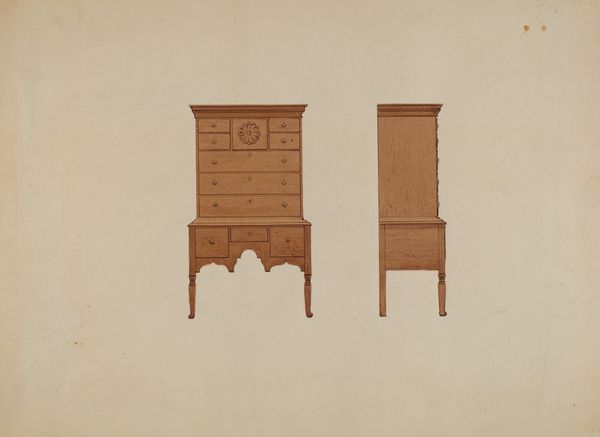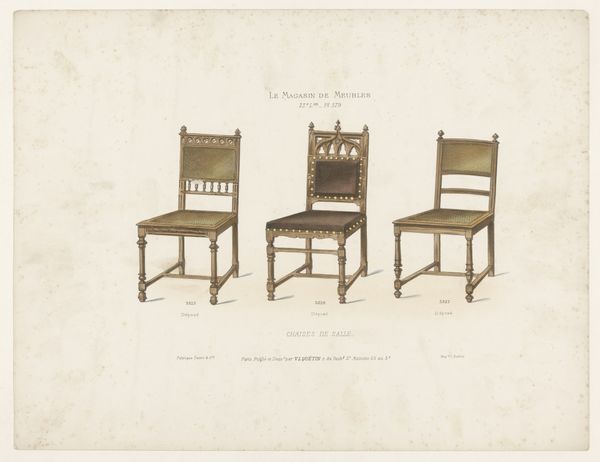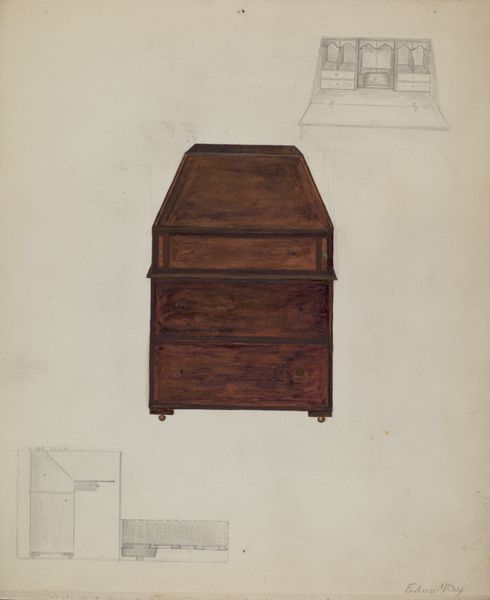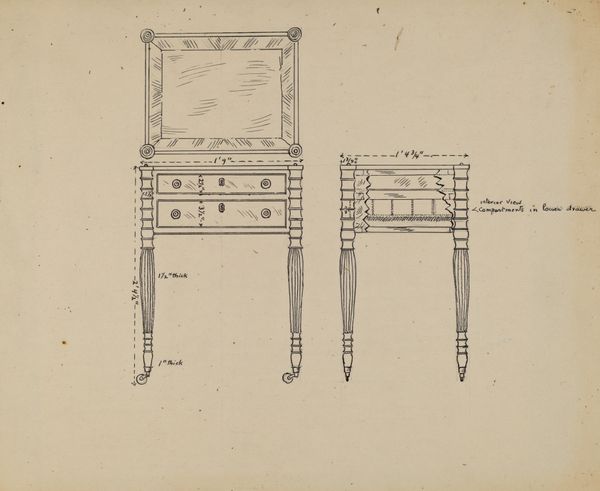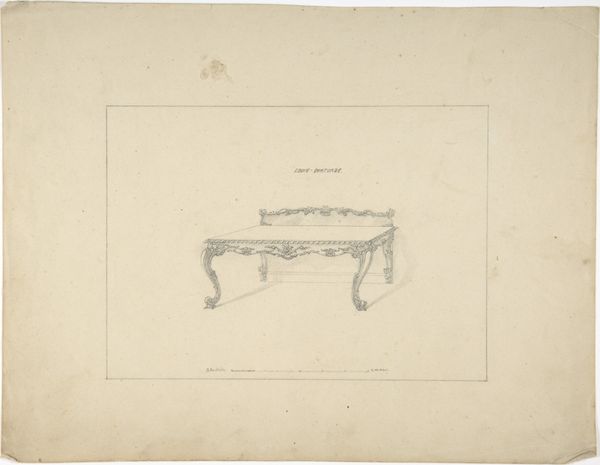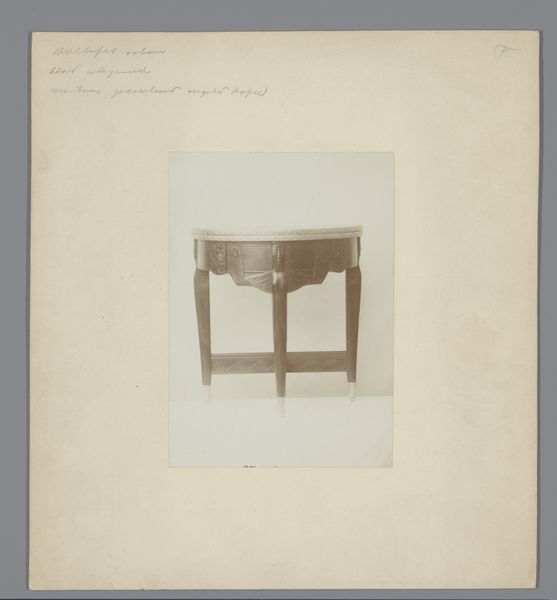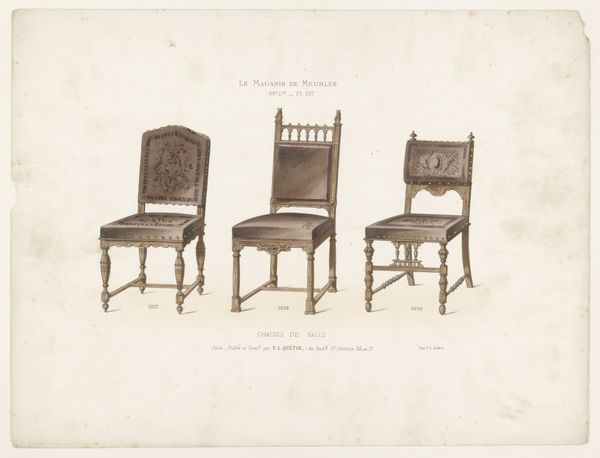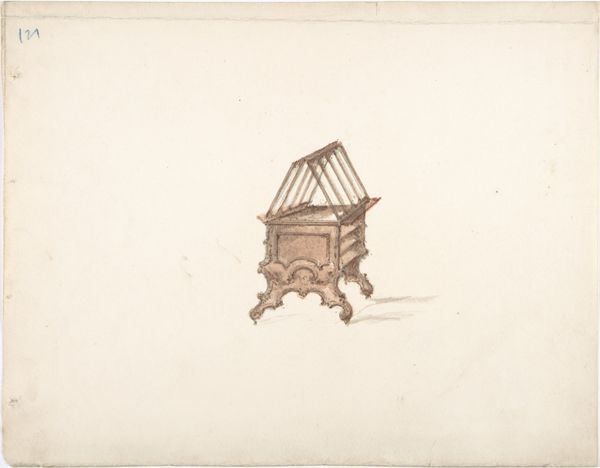
drawing, paper, pencil
#
drawing
#
paper
#
pencil
#
academic-art
Dimensions: height 276 mm, width 359 mm
Copyright: Rijks Museum: Open Domain
Curator: Take a look at this fascinating drawing entitled "Twee commodes," believed to be made after 1878 by an anonymous artist. It's rendered in pencil on paper. Editor: My first thought? Elegance, but also a stark kind of presentation. These aren’t romanticized depictions. They read more like blueprints for luxurious furniture. Curator: Exactly. There’s an interesting contrast there, isn’t there? These commodes, meant for storing precious things, are here depicted in a relatively simple medium. What does that juxtaposition speak to you about regarding craft and material worth? Editor: It makes me wonder about the social context of the time. The late 19th century witnessed burgeoning industrialization. Perhaps this drawing reflects a growing fascination with mass production and a tension between handcrafted artistry and emerging mechanized methods. I want to examine that paper; I'd guess it was machine-made and fairly cheap at the time. Curator: An excellent point. We can interpret the commodes themselves. Note the intricate detailing, typical of high-end furniture, designed to evoke wealth, status, the confidence to store precious items inside. Notice how different shapes play within each model, though their basic function would have been nearly the same. They suggest differing tastes. Editor: The labor involved must have been intense, especially with hand carving those embellishments. The drawing becomes almost a ghostly representation of the hands that would have brought these objects into being. This drawing documents the history of luxury goods; who owned them and who didn't. Curator: That resonates. The commode embodies more than mere utility, evolving into a repository of societal meaning—a mirror reflecting wealth, ambition, and shifting cultural tastes. Editor: Yes, and this drawing helps us understand the labor practices embedded in those cultural values. Seeing the simplicity of the drawing set against the presumed opulence of the physical objects gives the modern viewer a glimpse into production realities. Curator: Considering these perspectives enriches our experience beyond aesthetics, drawing us to understand them as icons within a visual language. Editor: Indeed. From the artistic choices and historical context to the present-day understanding, every aspect of the artwork gains deeper value from the artist’s intentions.
Comments
No comments
Be the first to comment and join the conversation on the ultimate creative platform.
